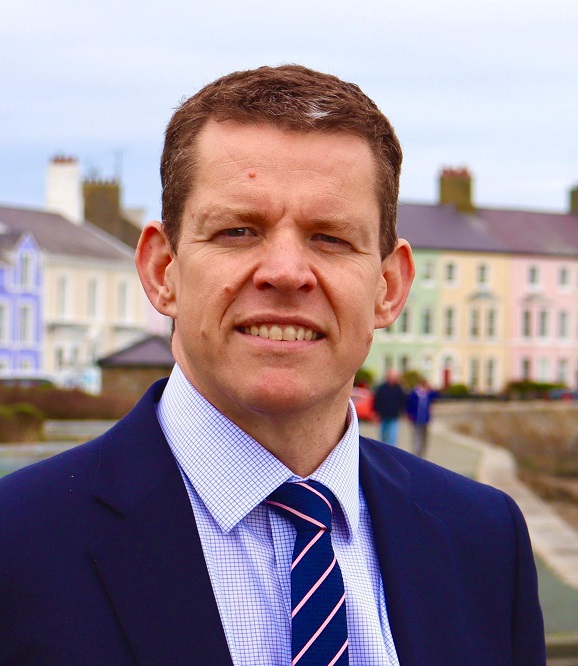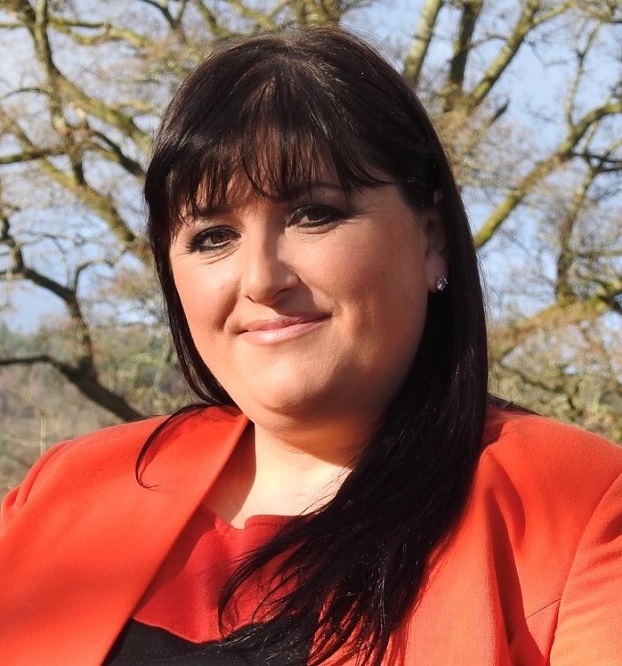Ynys Môn’s economic woes at the heart of Senedd election campaign

Gareth Williams, local democracy reporter
Economic setbacks have become almost routine over recent months as the ongoing pandemic continues to wreak havoc with many people’s livelihoods.
But while leading the recovery will be one of the biggest tasks facing any Welsh Government after May, nowhere will it be more anticipated than the Isle of Anglesey.
Known as Môn Mam Cymru – or the Mother of Wales – this island was once known as the nation’s breadbasket due to its fertile land and suitability for food producing crops.
But while its economic hopes were more recently pinned on a new nuclear power station, the scrapping of Wylfa Newydd earlier this year has led to dark clouds gathering over future employment prospects, despite ongoing efforts to salvage such a project.
With tourism now playing a bigger role than ever – albeit often offering lower paid and seasonal work, with the island being “over reliant” on the sector according to some reports – the offer of well paid jobs within the private sector are now scarcer than ever.
But with some signs of light over the horizon – including making the most of the island’s natural resources and even the prospect of becoming a powerhouse in the production of hydrogen – capitalising on such opportunities will be a key task facing whoever represents this seat in the next Welsh Parliament session.
Economic blows
The early 21st century has mainly been a tale of largely economic woe for the island, with the loss of almost 500 well-paid jobs at Anglesey Aluminium still being felt over ten years on.
Meanwhile, further blows seemed to be a regular occurrence over subsequent years, including the closure of the Welsh Country Foods abattoir in Gaerwen with 350 workers losing their jobs in 2013 and more continuing to be shed at the original Wylfa Magnox plant – which employed 512 workers when it stopped producing electricity in late 2015.
Decimated
Adopted in 2010, Anglesey’s “Energy Island” programme was designed to attract high skilled jobs to an area decimated by blow after blow, leaving it at the bottom of the UK’s GDP table.
Central to these plans was a new nuclear power station at Wylfa, near Cemaes, along with biomass, wind and solar power projects, leading to Anglesey becoming “the powerhouse of Wales and the UK.”
It had been hoped that the island’s second nuclear power plant would be up and running by now, but its scrapping as well as further earthquakes caused by Brexit and the Covid-19 pandemic have left the island’s economic prospects facing an even less certain future.
The £15-20bn project was initially shelved in January 2019 after Hitachi failed to reach a funding deal with the UK government under Theresa May.
But with supporters having consistently championed its economic benefits – cited to provide around 6% of the UK’s electricity and create 8,500 jobs during construction and another 850 over its 60-year operational lifespan – they remained hopeful it could be revived if a new funding arrangement was struck.
But the announcement in January 2021 that the Japanese tech giant and its subsidiary, Horizon Nuclear Power, was pulling the plug on Wylfa Newydd was met with disappointment by political figures despite the UK Government indicating it would “continue to explore future opportunities” for the site.
On a smaller scale, but no less an impact on the communities it serves, was the 2019 closure of the Rehau plant in Amlwch, leading to the loss of 100 jobs in an area already feeling the economic strain more than most.
The future
With several figures on the island remaining adamant that Anglesey is the best location in the UK to meet future energy needs, any hopes of a nuclear revival are more likely pinned on the UK Government reaching a funding deal to develop such costly infrastructure projects.
Despite this, whoever leads the Welsh Government after May 6 will play a major role in leading the nation’s economic recovery as it not only navigates the hurdles thrown in its path by Brexit, but also the destruction caused by the Covid-19 pandemic.
Hoping to retain his seat in Cardiff Bay and play his part in this will be Rhun ap Iorwerth, who’s represented the island since a 2013 by-election.
The former BBC journalist sees promise ahead and is spearheading one of Plaid’s landmark policies of establishing a Wales-wide energy company and basing its headquarters on the island.
“Covid recovery is now the overriding priority, in terms of health and care services and the economy,” said Mr ap Iorwerth, whose 9,510 majority is currently the biggest in the Senedd.
“Many will need support with retraining, and Plaid Cymru will offer a Youth Jobs Guarantee, but new employment opportunities will be needed, too.
“I’m optimistic about green energy, for example. Having led a Senedd debate on Hydrogen generation, it’s good to see the island’s hydrogen plan coming together.
“With our abundance of tidal energy we can be a leader in marine power, and Plaid’s plan to establish the HQ of a new organisation, Ynni Cymru, on the island, facilitating green energy projects Wales-wide, will create jobs and put Ynys Môn as the heart of Wales’s green economic recovery.”

His Labour challenger, Sam Egelstaff, has been advocating a change of use of what was the Lein Amlwch railway and transforming it into a mixed use path, suitable for walkers, cyclists and other non-motorised pursuits as part of a drive to promote activity as well as tourism.
On the campaign trail she will be hoping to capitalise on historic Labour support which saw Albert Owen returned as the island’s MP on five occasions between 2001 and 2019.
“In future, more people will be taking holidays in the UK, so we need to increase awareness of what a great place Anglesey is and highlight its distinctive culture,” she said.
“We should also create more cycling and walking routes. The Lôn Las Môn project for a mixed use path from Gaerwen to Amlwch would be a good example.
“A leisure park at the Octel site also sounds promising. But beyond this, we need to equip people with the skills they will need in a changing economy, and Welsh Labour’s promise of 125,000 all-age apprenticeships will be vital in achieving this.”

Lyn Hudson, who hopes to turn the Senedd as well as Westminster seat blue, has followed the island’s Conservative MP in talking up the prospect of Freeport status for Holyhead.
Whitehall ministers – who want to establish one of eight across the UK in Wales – say that goods entering such a freeport would not have to pay tariffs, import VAT or excise duty until they leave the freeport and enter the domestic UK market, with simplified customs procedures and declarations.
But the Welsh Government is thought to have reservations on their economic benefit, including a concern that they just displace business activity from elsewhere.
Ms Hudson will be hoping that Conservative support on the island remains steady enough to overturn Rhun ap Iorwerth’s hefty majority, after the island returned Virginia Crosbie to Westminster in 2019’s three way race.
She said, “Covid-19 has decimated all regions in Wales but Anglesey’s economy recovery will be strengthened by my concept for Ynys Môn.
“The hydrogen hub in Holyhead, as the centre of green energy, is a prime example of the many great projects to bring change.
“I will encourage investment for a new nuclear plant at the Wylfa site and will strengthen our bid for Freeport status, so there is huge potential for transformation, for the economy and future of the island.
“This will bring opportunities which are much needed for regeneration and renovation. I will support and encourage businesses, new and established, and promote tourism and hospitality to allow Ynys Môn to recover and thrive again.”

Brexit
Anglesey, just like the rest of Wales and the UK, was largely divided on the issue of Brexit with the island narrowly backing the proposal by 50.9% to 49.1%.
There is no doubting, however, that some of the early effects have been felt here more than almost any other part of Wales thanks to it hosting one of Britain’s main transport links with the Irish republic.
The Port of Holyhead, Britain’s second busiest roll-on roll-off port has seen a slump in traffic, with reports in January of a 70% drop in freight trade on Welsh-ROI routes compared to previous years.
This was blamed on previous stockpiling prior to the end of the transition period and a rise in direct services between Ireland and the EU, mainly thanks to new sailings via France.
But with freight traffic patterns showing signs of recovery over recent weeks – although still down on previous years – there are hopes that this pick-up will continue.
Rhun ap Iorwerth, who campaigned to remain in 2016, says that now is not the time to dwell on that referendum result.
“Whilst we can see the negative consequences, in increased business costs, the loss of markets, and the fall in traffic through Holyhead, threatening port jobs, I won’t dwell on that referendum result – we have to get on with it.
“We have to play to our strengths, putting our skills in the energy sector and our natural resources to good use, capitalising on our expertise in food production, in technological innovation through the MSParc business park, by supporting home-grown tourism, and of course by supporting our countless small businesses to prosper.
“We have to remain focused and optimistic, whatever the new challenges. ”
Sam Egelstaff, who also supported a remain vote, believes that the “hard Brexit” chosen by the UK Government continues to pose some “serious challenges.”
“We’ve already seen a reduction in freight and threat to jobs at Holyhead Port. There will be effects on our farmers and small businesses that export.
“Anglesey is also not a priority area under the Tories’ Levelling Up Fund, meaning we will get less support than we did from EU funding.
“As to opportunities, businesses need help in finding new export markets and creating new jobs, especially in emerging green industries like renewable energy, new digital technologies, and low-carbon housing.
“That is a priority for Welsh Labour.”
Lyn Hudson believes that the economic future of Anglesey is bright, however, now that Brexit has been achieved.
“We have innovative, clear prospects with the ability to forge new links, find new global markets and capitalise on opportunities to promote Ynys Môn for trade and investment with future new partners worldwide.
“I will encourage entrepreneurship for industries and businesses, new and established, to flourish so that our young people will not need to leave the island to find skilled employment.
“This will preserve our cherished language and culture, and with our plan for affordable housing and introducing the right to buy, what better way is there to create a great future for the island’s people than to give them that security.”
The remaining Ynys Môn candidates, Emmett Jenner (Reform UK) and Chris Jones (Welsh Liberal Democrats) were both contacted to contribute to this piece.
Support our Nation today
For the price of a cup of coffee a month you can help us create an independent, not-for-profit, national news service for the people of Wales, by the people of Wales.





